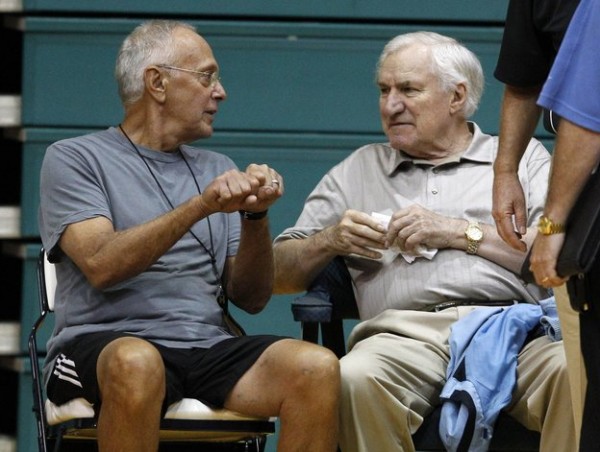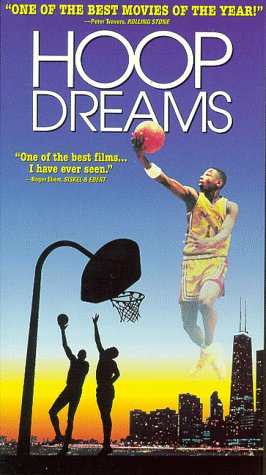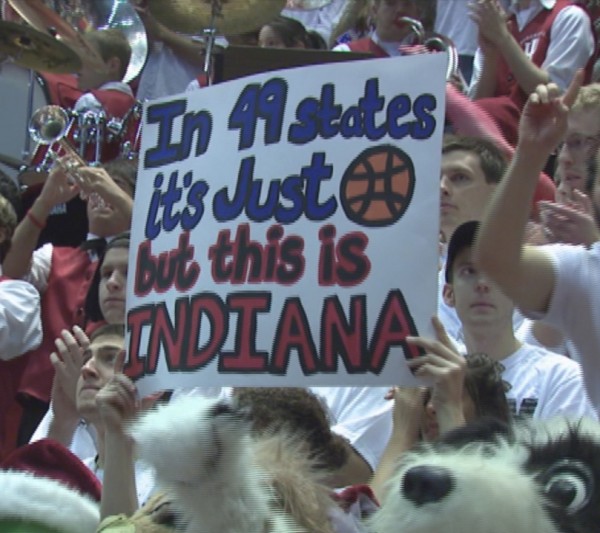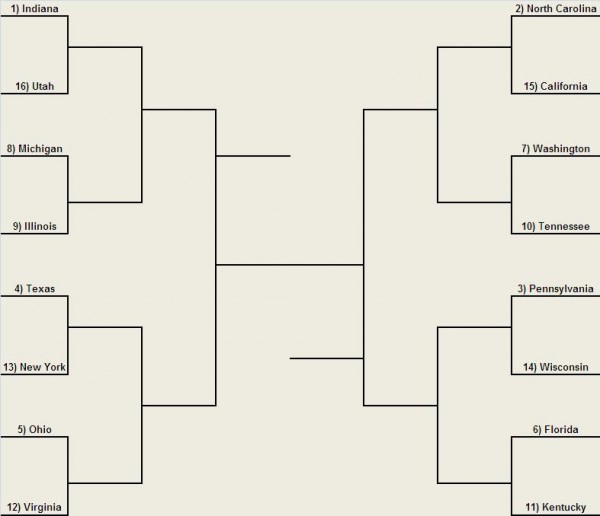
Andrew Murawa is the RTC correspondent for the Pac-10 and Mountain West Conferences and an occasional contributor.
Part One: RECRUITING
Over the summer, we’ve spent time hearing about some of the next big-name recruits on their way to college basketball: Jared Sullinger and Harrison Barnes, Anthony Davis and Michael Gilchrist. We’ve heard the big-time schools announce their high profile games on their upcoming schedules: Kentucky going to the Maui Invitational and visiting North Carolina, Michigan State hosting Texas and going to Duke. But for the vast majority of Division I programs, they’ve been flying under the radar. There are at present 73 teams that participate in basketball in the six BCS conferences, but there are 347 total programs in Division I. Of those other 274 programs, there are certainly quite a few big-name programs: last year’s national runner-up Butler comes to mind immediately, as does Gonzaga, Memphis and a handful of other schools in conferences like the Atlantic 10 and the Mountain West. But, we were also interested in how the other half (or really, how the other three-quarters) lives, so we spent some time talking to coaches, athletic directors and other people around the country affiliated with some of those other schools — those non-BCS schools, those “mid-majors” — and we asked them about how they recruit, how they create a schedule, how they market their programs, and quite a few other things. Over the next eight weeks, we’ll let them tell you their story, in their own words.
To begin, let me introduce and thank this week’s cast of characters:
- Murry Bartow, Head Coach, East Tennessee State – Bartow is entering his eighth season as the Buccaneers head coach, after having previously succeeded his father Gene Bartow as the head coach at UAB. Bartow has posted a 118-72 record in his years at ETSU and has racked up 241 total wins and four NCAA appearances in his 13 seasons as a head coach.
- George Ivory, Head Coach, Arkansas-Pine Bluff – Ivory enters his third season in Pine Bluff, where he has turned the Golden Lions into winners. UAPB turned around an 0-11 start last season by finishing 18-5 over their last 23 games, winning UAPB’s first SWAC tournament title in 43 years and advancing to the NCAA tournament before losing to eventual national-champion Duke.
- Chris Caputo, Assistant Coach, George Mason – Caputo is entering his sixth season as an assistant coach for the Patriots after spending the previous three seasons as an administrative assistant and video coordinator under head coach Jim Larranaga.
- Tommy Dempsey, Head Coach, Rider – Dempsey enters his fifth season as the head man at Rider, following two seasons as an assistant. He has compiled an 83-75 record over that time and coached NBA lottery pick Jason Thompson during his time there.
- Eric Reveno, Head Coach, Portland – Reveno heads into his fifth season at Portland having turned around a program from a team that was 18-45 in his first two seasons to a team on the rise with a 40-24 record over the last two seasons. Reveno spent his previous nine seasons as an assistant at Stanford, his alma mater where he was a Pac-10 Conference All-Academic Team selection as a senior.
- Eric Brown, Assistant Coach, Long Beach State – Brown enters his fifth year as an assistant on head coach Dan Monson’s staff, after previously having spent time on coaching staffs at Cal-State Northridge, USC and Iowa State.
- Jason James, Head Coach, Tennessee-Martin – James enters his second season as the head coach at UT-Martin following eight seasons as an assistant coach there. His first season was rough, to the tune of 4-25, after he was appointed head coach in the wake of scandal with the previous head coach. But James, the recruiter who brought Lester Hudson to UT-Martin, has plans to begin to turn things around this season.
- Dale Layer, Head Coach, Liberty – Layer enters his second season at Liberty after having spent a season as an assistant at the university in 2007-08. In between, he spent a year at Marquette and previously he spent seven seasons as the head coach at Colorado State. He has compiled a 118-122 record in his eight seasons as a Division I head coach.
- Gregg Bach, Assistant Athletics Director for Communications, Akron – Bach was named to his current position this past summer after having spent the previous eight years on the media relations staff in the Akron athletic department. His new job makes him the spokesperson of the athletic department.
First up: recruiting. This is the biggest, most pressure-packed area in college athletics. No matter how good coaches are at the X’s-and-O’s, they need players to execute their plans. At the mid-major level, the likelihood of a coach winding up with a ready-made pro is minuscule, so coaches have to find diamonds-in-the-rough, and, perhaps more importantly, develop their players over the course of their careers. Not only do schools at this level have to compete with other schools of similar size, if they find themselves competing with a higher-level school for the same prospect, they may have to make a decision as to whether or not continuing to recruit the player is a worthwhile use of time. And the schools have to make the most of every advantage they can find in order to land the best student-athletes for their institution.
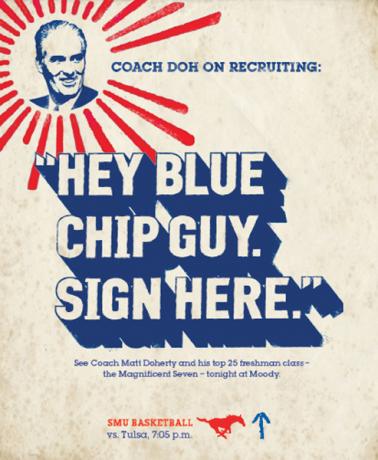
Recruiting Players Takes on Many Forms
Murry Bartow, Head Coach, East Tennessee State: Obviously, if you’re a college basketball coach, the most important part of your job is making sure that you’ve got good players.
George Ivory, Head Coach, Arkansas-Pine Bluff: There are a lot of things that go into recruiting. It comes down to what that kid is really looking for and what that kid wants out of college.
Bartow: There are so many things that go into it. There is no question that the relationship is critical, whether that’s with the head coach or an assistant coach. But that is very pivotal in the decision, building the relationship with not only the prospect, but a mom or a dad or whoever is going to be helping them make that decision. And certainly the product you’re trying to show them is important. Fortunately, I think I’m in a situation where I think we’ve got a good product, but there are a lot of things that are important: the school, the community, the housing, the fan’s support of your program, how many times you’re potentially going to be on TV and what conference you’re in, your history, the success you’ve had and how many times you’ve been to the NCAA tournament recently. So there are a lot of things and certainly different things are important to different players. For instance, we’ve been to the NCAA Tournament the last two years, and for some prospects that is very, very critical and important, and for others that might not be so important. So there are different things for different prospects.
When George Mason broke through to the Final Four in 2006, they were the first big mid-major success story in the NCAA Tournament since, arguably, Larry Bird’s Indiana State team made it there in 1979. Sure, there have been other non-BCS schools to get to the Final Four (Memphis ’08, Louisville ’05 and Marquette ’03 all came out of Conference USA, and Utah ’98 out of the WAC are all examples of non-BCS teams advancing to the Final Four, but none of those teams can really be considered a mid-major given their substantial basketball budgets), but Mason, an 11-seed and one of the last teams into the tournament that season, is clearly the first “modern” mid-major Cinderella story. While their success opened some doors recruiting-wise, new challenges arose as well.
Chris Caputo, Assistant Coach, George Mason: I don’t think anything has gotten easier since the Final Four, but it has been different for sure. I think we’ve gotten some good players, but you’ve got to caution yourself against those with superficial interest, people who will put you on their list because it sounds good, but they’re really not considering you because they are too far from home or whatever. You still want to make sure you’re getting guys that really want to be there and they’re hungry. Sometimes when you have success there are certain kids who are really attracted to the success and maybe not as attracted to working, almost like they’re feeling, “hey, if I get a scholarship over at George Mason, that’s it, I don’t have to work anymore.” But the guys that helped us get there, they signed with George Mason when it wasn’t as fashionable and they were driven to succeed. The one thing that the Final Four appearance has done for us is that it has helped us get involved with guys who maybe we previously couldn’t have gotten involved with. It helps us get into homes in different areas. You know, our school is much more of a household name nationally, and we’ve become a stronger name in our area as well. I think it has been good, but you also have to be careful with it too.
For mid-majors, a lot of the big-name recruits (McDonald’s All-Americans), are out of the question in all but the rarest of circumstances. This season, point guard Ray McCallum, Jr. chose Detroit over BCS schools like Arizona, Florida and UCLA, a decision which would have been startling were it not for the fact that his dad is the head coach there. For most mid-major programs, these players aren’t even in consideration. To make up for that, mid-majors have to find players that fly under the radar of some of the bigger schools and guys who are willing to put in the hard work to improve.
Read the rest of this entry »






























